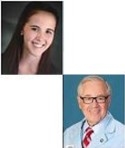The Arizona Telemedicine Program’s T-Health Institute (Institute for Advanced Telemedicine and Telehealth) is charged with developing innovative medical science curriculum throughout the education continuum in Arizona and throughout the Unites States. Since its creation in 2004 by the Arizona State Legislature, and initially supported by targeted funding in the federal budget, the T-Health Institute has facilitated over 100 webinars and helped publish over 200 blogs articles. It has supported innovative education research for STEM training, K-12 medical science education, early college curriculum development, and interprofessional education. T-Health is currently engaged in developing telemedicine curriculum for medical students.
The Flexner Century (1910-2010)
The “Flexner Century” spanned the years from 1910 to 2010. It began with the issuing of Abraham Flexner’s highly influential report entitled “Medical Education in the United States and Canada: A Report to the Carnegie Foundation for the Advancement of Teaching”. This report has been characterized as the most important report on education, in any area, ever published. It resulted in the transformation of US medical education from an unregulated proprietary business, before 1910, into a highly regulated, university-based medical education system, modeled after medical education programs at the great universities in Europe, by 1930. For many years, Flexner served as the agent of change, working methodically for a self-selected committee of the wealthiest US industrialists/philanthropists, who wanted medical education drastically upgraded, in order to leverage advances in the pharmaceutical industry into clinical practice. Over a period of 20 years, Flexner doled out $600 million dollars of their money to create and support 31 highly regulated “allopathic” medical schools. These became the underpinnings of the most technology advanced health care system in world.
Flexner’s Rules on Curriculum
It turns out that there were issues baked into the original Flexner Report that emerged only decades later. Frankly, what is regrettable is that the original Flexner plan lacked a “sunset clause.” Flexner himself would have found it unsettling that nobody thought to update his recommendations for an entire century. He was one of the most forward-thinking innovators in America. Clear cut fault lines in Flexner’s medical education system began to appear at its 50-year mark in the Flexner Century, in 1960, precisely when Dr. Weinstein, the co-author of this blog, entered medical school.
Both then and now, medical schools regarded the Flexner Report’s recommendations as their exclusive property. Also, they have treated the Flexner Report’s recommendations as being the “letter-of-the-law” when it came to defining their own curriculum. According to one interpretation of Flexner’s guidelines, each discipline essentially owned the intellectual property that it taught within its own courses. The curriculum was taught strictly along discipline lines. There was no built-in mechanism for crosstalk among the academic departments. Generally, medical school faculty were not even aware of the specifics of the science coursework their students were taking in medical school or had taken as college undergraduates. University deans, college senates run by faculty, and accrediting agencies all played strictly by the rules. Medical school deans also bought into the idea that the original “Flexnerian curriculum” as spelled out in Flexner’s 1910 report, was foundational for the practice of medicine. This persisted long after other disciplines, such as immunobiology and molecular biology appeared on the scene.
When Medical Education Policy Becomes “Religion”
As the years passed, recitation of the Flexner course guidelines, “truth through repetition”, became a kind of scientific “religion.” The Flexnerian framework emerged as a barrier to progress as allied health disciplines emerged in the second half of the Flexner Century. Interprofessional education curriculum innovators were paralyzed by the existing order as medicine approached its celebration of the Flexner Centennial in the year 2010. Few thought leaders anticipated that the artificial separation of medical science education and the development of population health literacy could become a national issue soon.
A Startling Blow from the US Institute of Medicine (renamed, “National Academy of Medicine”)
Throughout the Flexner Century, there was a disconnect between medical science education and health literacy education. Medical science was taught in universities and health literacy instruction was by gym teachers in K-12 schools. It took a startling series of publications by the US Institute of Medicine (recently renamed the National Academy of Medicine), starting at the turn of the 21st century, to bring the potential importance of population health literacy to the attention of the general public in the United States. People were startled to learn that medical errors are the third leading cause of avoidable adult deaths in the United States, ranked right behind heart disease and cancer. The estimate of 250,000 avoidable deaths a year, in 2002, was judged to be unacceptable. Several years later, this estimate for avoidable deaths was adjusted upward to 450,000 deaths per year by a team of surgeons at Johns Hopkins. When this was tied, in part, to the low health literacy in the US population, the US education system came under scrutiny.
Seeing is Believing
Dr. Ronald Weinstein, a co-author of this blog, became aware of this issue around 1966, when he was a pathology resident at the Massachusetts General Hospital (MGH). In short order, he performed autopsies on three patients who died from preventable medical errors at the MGH. He still shows those cases to medical students, as a warning that medicine is potentially hazardous. Dr. Weinstein spoke with the families of the deceased patients and was surprised at their near-total lack of health literacy when it came to discussing anything medical. They were willing to let it go, saying “the doctor was a nice man.” Dr. Weinstein has been working on the challenge of linking medical science education and population health literacy education ever since.
The Sir William Osler Summer Fellowship Programs
In 1978, as chair of the Pathology Department at Rush Medical College (1975-1990) before coming to Arizona, Dr. Weinstein established a Sir William Osler Summer Fellowship Program for High School and College students interested in medicine. Weinstein had taught Harvard Medical School students in Boston and had become convinced that there was a serious disconnect between what pre-medical students were being required to master in order to get into medical school and what medical students actually needed to know to be good doctors. Dr. Weinstein decided to test his theory that college students, and even high school students, could master some of the medical school curriculum without taking the customary Flexnerian pre-medical science courses. Wave after wave of summer fellows from colleges, and then high schools, were exposed to coursework on mechanisms of diseases, taken directly from what medical students were required to take. These non-medical students did fine. Eventually, he experimented giving medical school-derived coursework even to middle school students and they did well. Dr. Weinstein now wants to get two things accomplished next: 1) make mechanisms of diseases coursework available to all undergraduate students at The University of Arizona; and 2) integrate that coursework into their Bachelor of Medical Science degree program.
A College of Medicine for Undergraduates
While Weinstein does not take credit for what happened next, it is along the lines of what he had been proposing to the Arizona institutional leadership for years. He has a string of publications in professional journals that tracked his progress. Weinstein was recruited to The University of Arizona as Chair of Pathology in 1990. He stated his interest in bringing medical science curriculum to undergraduate college students at the time of his recruitment. For many years after he arrived in Tucson, he did serve as Program Director for Arizona’s Medical Technology program which routinely taught medical science to undergraduate students. The University of Arizona created a BS in Physiology major in 1992. This major is offered through the College of Medicine, not the College of Arts and Science as it is in many other universities.
Recently, Dr. Michael Dake, Senior Vice President for Health Sciences, announced that The University of Arizona will be adding a fifth health science college to its Arizona Health Science campus. The other four are: College of Medicine; College of Pharmacy; College of Nursing; Mel and Enid Zuckerman College of Public Health. It will be a BS degree-generating undergraduate college. Hopefully, it will house not only a full set of allied health sciences programs, but additional undergraduate courses drawn from the four other health professions colleges at Arizona Health Sciences in Tucson. For now, what is especially exciting in the context of the theme of this blog, on democratization of medical science, is that UA Gen Ed students will have access to these new course offerings. This could prove to be a major step forward in eventually providing medical science coursework throughout the entire US education continuum, including down through our K-12 schools. That would be revolutionary, even a new megatrend, if it cements a strong linkage between medical science education and health literacy education, eventually universally available for all.
Democratization of Medical Science in America
Why is this especially interesting right now? It is because it opens the flood gates for the democratization of medical science across all of society. What we have referred to previously as the “Flexner Wedge”, the inadvertent blockage of the diffusion of health- related science coursework out of medical schools, now is finally being removed. Medical schools are no longer the exclusive custodians of a broad swath of curricular content relevant to patient care. It is open season to share this information with everybody. And, ultimately, we hope that this shows up as a meaningful uptick in the level of health literacy in the general population. Increasing health literacy in the patient population will be a major step forward in the intelligent management of diseases, in the incorporation of patients as full members of their personal healthcare teams, and in the avoidance of preventable medical errors, now and in the future.

